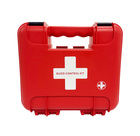CPR for drowning casualties
Want to watch this video? Sign up for the course
or enter your email below to watch one free video.
Unlock This Video Now for FREE
This video is normally available to paying customers.
You may unlock this video for FREE. Enter your email address for instant access AND to receive ongoing updates and special discounts related to this topic.
Water Rescue and Drowning Response on Boats
Overview
Water poses significant risks on boats, particularly the danger of drowning. If someone falls into the water, quick and safe retrieval is crucial to prevent drowning.
Retrieval Procedure
- Approach: Bring the boat close to the person in the water, ensuring safety by stopping the engine and disengaging the propeller.
- Extraction: Pull the person out of the water onto a stable surface aboard the boat.
Response to Drowning
Breathing Assessment
Perform a breathing check using head-tilt and chin-lift technique. Assess for normal breathing or signs of drowning.
Initial Steps
- Breaths: Administer five rescue breaths to provide oxygen and attempt to initiate breathing.
- Compressions: If no signs of breathing, proceed with 30 chest compressions followed by two breaths.
- Continuation: Repeat cycles of 30 compressions and two breaths until signs of life or professional medical assistance arrives.
Considerations for Drowning Victims
If water has been ingested, monitor closely for complications and seek medical evaluation promptly to assess for potential respiratory issues.
Recommended Products For You
WoundClot Trauma 20cm x 30cm
£37.95 + VAT
Lifesaver Kit with Tourniquet - Green
£99.00 + VAT
Lifesaver Kit Ultra - Red
£99.00 + VAT
Cyclist Trauma / Emergency Kit
£55.00 + VAT
Animal First Aid Kit
£12.00 + VAT
Bleed Control Kit In Red Titan Box
£55.00 + VAT
Personal Bleed Kit in Belt Pouch - Red
£34.95 + VAT
Pet Bleed Kit
£14.95 + VAT
_-Trauma_20x30_CE.jpg)






